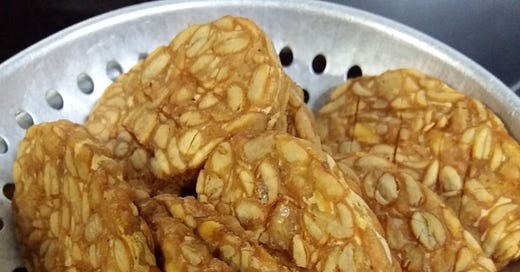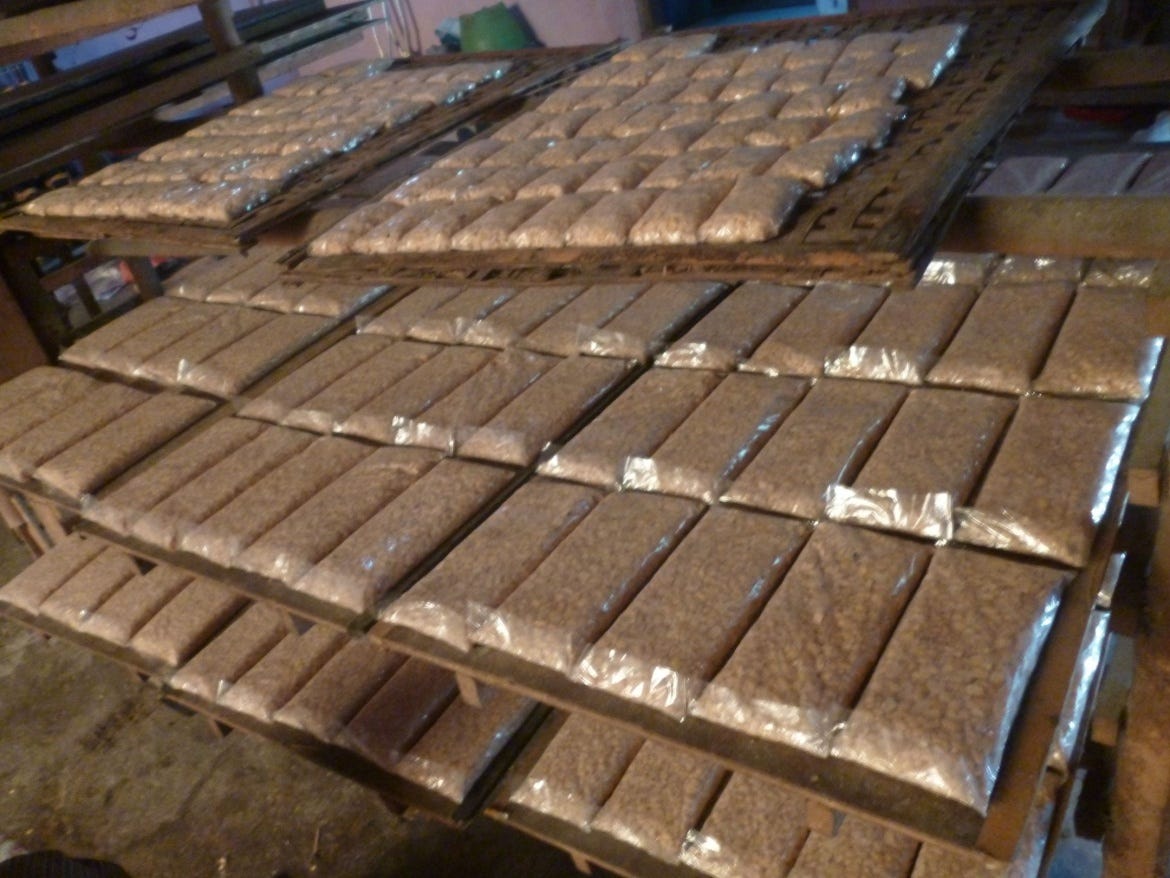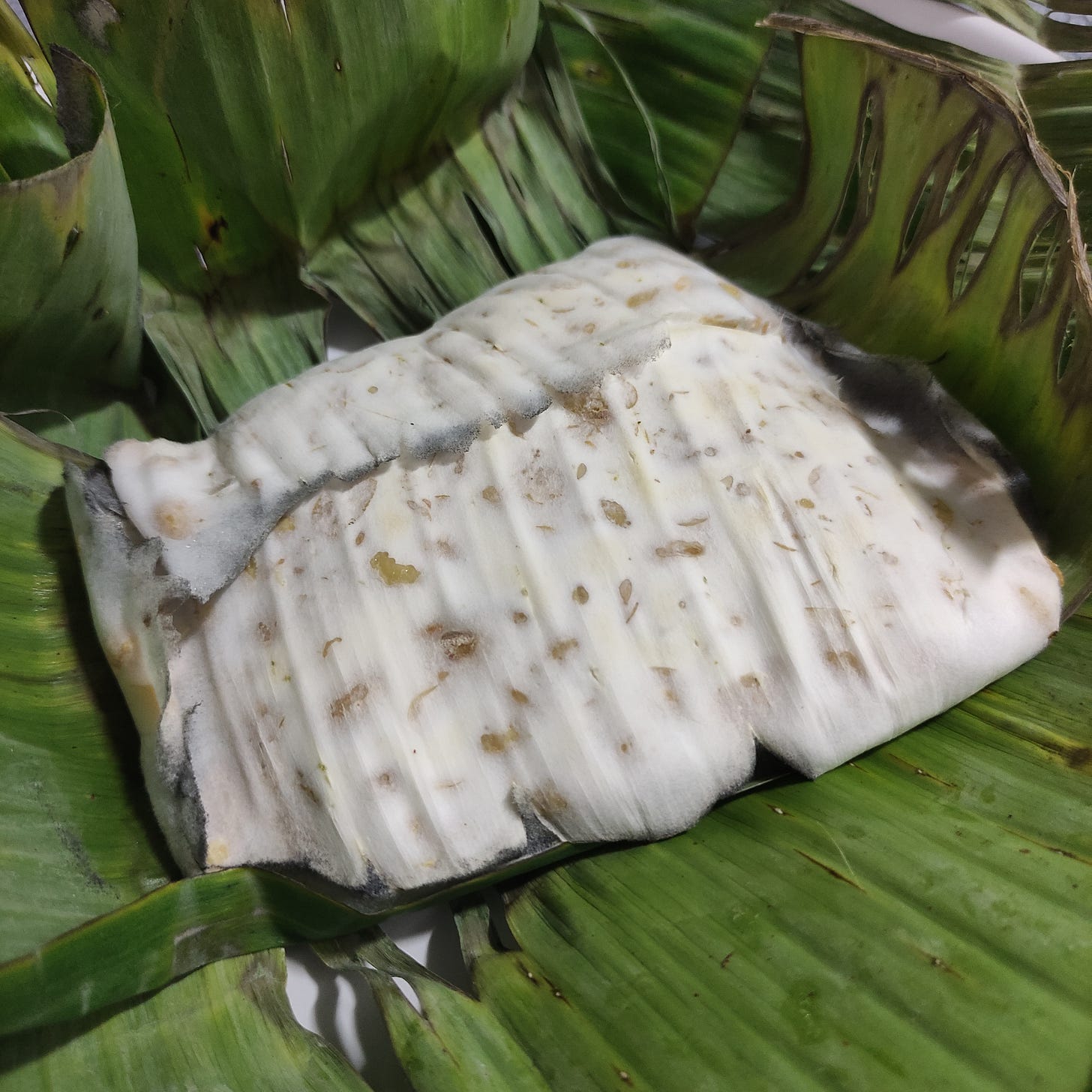Tempeh: Part I
My new cookbook Plantasia: A Vegetarian Cookbook Through Asia will be officially launched in Singapore this Saturday! In anticipation of the launch, I’ve invited one of Plantasia’s contributors Hairil Sukaime, a descendant of tempeh artisans in Singapore, to guest-write this week’s newsletter. In recent years, tempeh has been enjoying much popularity as a “meat substitute”, but not many know how it is being made. In this newsletter, Hairil shares about tempeh as the lifeblood of his family and a food item that is steeped in tradition and artisanship. He also shares about Kampung Tempeh, a village in Singapore that specialised in the production of tempeh.
Before we jump straight into this deep-dive, a few announcements on upcoming book events:
21/10: Plantasia’s official book launch at Book Bar SG - In conversation with Wen Yeu, the designer of Wet Market to Table and Plantasia, about the making of Plantasia. (Free, register here)
28/10: Plantasia at Epigram at SAM - In conversation with Vasunthara, Masterchef Singapore finalist and private dining chef. Available for purchase at the event are exclusive kueh boxes by Gab Dominic, made to celebrate the launch of Plantasia. (Free, register here)
28/10: Plantasia at Atap Assembly - A night exploring how vegetables have become sidelined in the Singaporean diet and their historical significance in the Nusantara, featuring Azfar Maswan, chef and culinary content creator at Nom. A light meal and refreshments will be provided. (Ticketed event, register here)
29/10: Plantasia at Kebon Dapor - In conversation with Hairil Sukaime at the beautiful greenhouse Kebon Dapor to chat about the craft of tempeh making. Hairil will be bringing his homemade tempeh for everyone to taste. (Ticketed event, register here)
See you there!
Homemade tempeh
By Hairil Sukaime
Tempeh is a key part of my identity and culture. As a Javanese, tempeh is an omnipresent food item on the dining table, be it for our daily meals or served at more elaborate ones at family gatherings. It is incredibly versatile; while it makes for a great deep-fried snack, it can also be incorporated into main dishes that go along with rice.
But extending beyond my identity as a Javanese, my relationship with tempeh is a complex one as my paternal side of my family relied upon it to make a living. Many decades ago, my yai and nyai (pronounced ya-ee and nya-ee; meaning grandfather and grandmother in Javanese) made the arduous journey to Singapore from the small town of Pacitan in East Java. Arriving in Singapore, they settled in Kampung Tempeh, a village located around present-day Jalan Haji Alias, just off Sixth Avenue along Upper Bukit Timah Road.

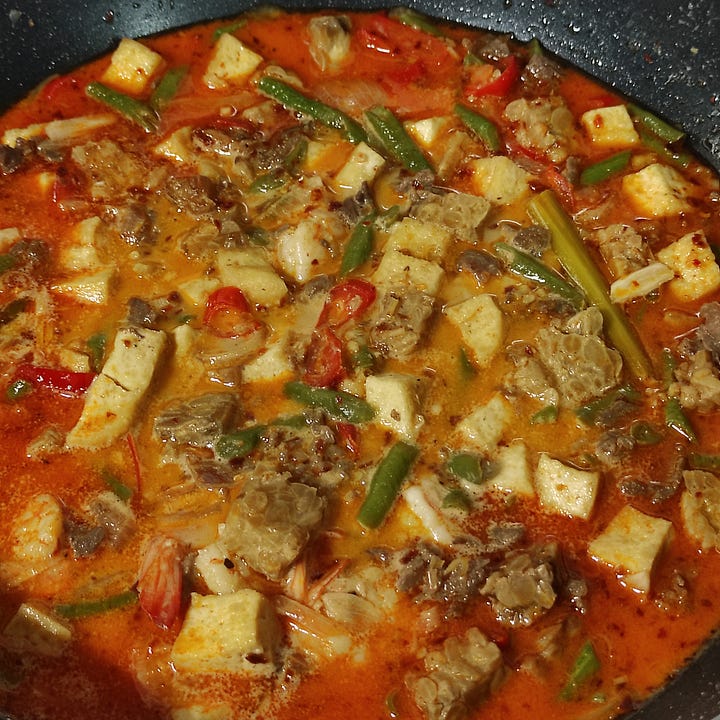
Like every other family in the kampung, which was once said to be Singapore’s largest producer of tempeh, my family fermented soybeans for a living. It would not be an overstatement to say that my grandparents’ nine children were raised on tempeh.
Tempeh-making was a family affair, with the women put in charge of the soaking, cooking, inoculation, and packing of soyabeans, while the men were tasked with the more physical duties; such as dehulling and splitting the soyabeans. During the festive periods of Hari Raya Puasa and Hari Raya Haji, it was also common for families to rope in other villagers to assist in tempeh-making. In this way, the act of making tempeh represents ‘gotong royong’, the spirit of cooperation that underpins life in kampungs.
Prepping the soybeans
While these days it is not uncommon to see tempeh being made with other legumes, seeds, and pulses, soybeans have served as the legume of choice for tempeh-makers for centuries. Good quality tempeh starts with dried soybeans that are soaked in water until doubled in size. Following that, the beans are dehulled and split.
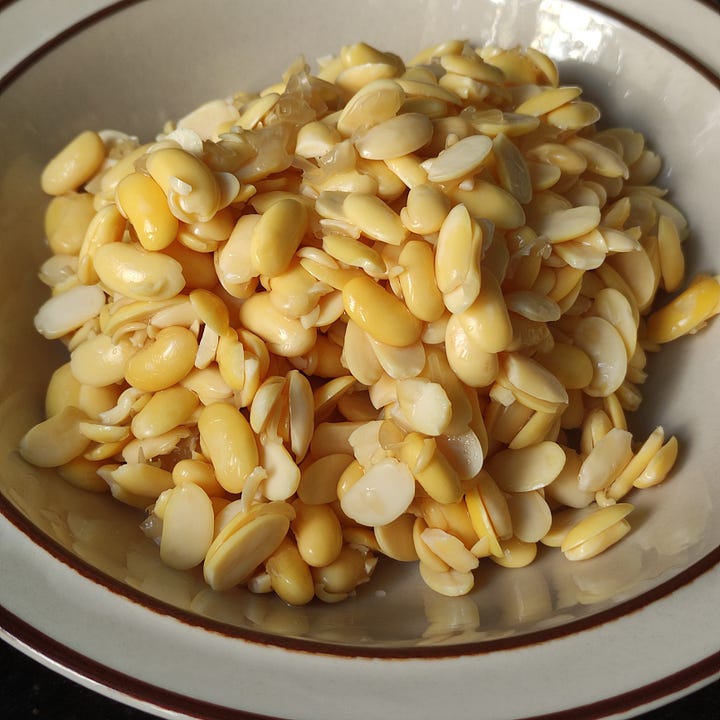
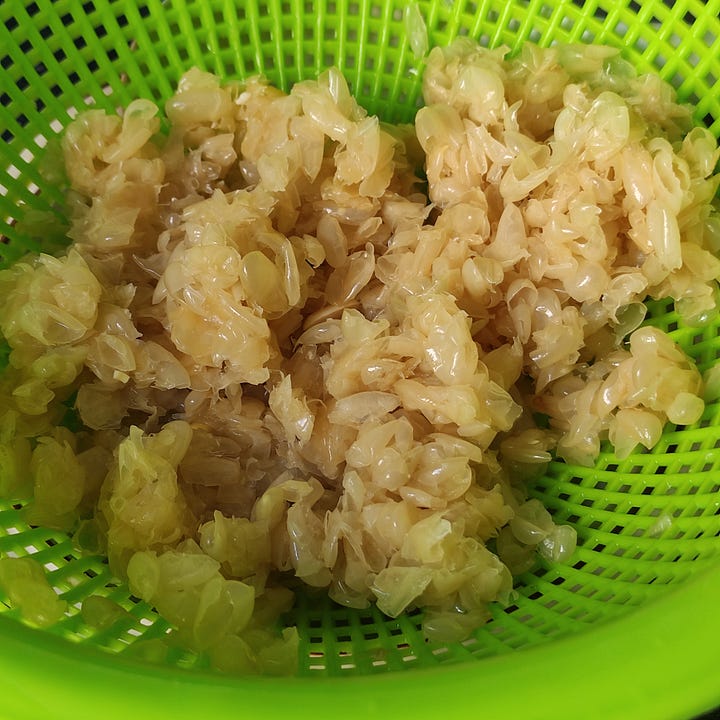
Splitting the soybeans is a crucial part of the tempeh-making process as it generates a large surface area, allowing the starter culture to maximally permeate the beans. Traditionally, the men of the family would tread on the beans to split them, similar to how grapes were processed when making wine, though these days bean-dehulling machines are available. Nothing went to waste; the skins of the soybeans would be composted, turned into animal feed, or were dried and ground into flour.

Cooking and cooling the soybeans
The dehulled and split beans are then boiled until they turn al dente, and cooled on sheets of muslin. The goal is to achieve cool and dry beans; two factors that are crucial for the optimal formation of the mycelium and spores for tempeh.
Inoculation and fermentation
To form the tempeh, the cooled beans are left to “mingle” with a starter culture. The starter in question is rhizopus oligosporus, naturally found in waru (hibiscus tiliaceus) leaves that grow abundantly in Indonesia. In a process known as usar, which means ‘to rub’, the cooled beans are rubbed against the leaves. Alternatively, torn bits of fresh store-bought tempeh also served as the starter for a new batch of tempeh.
At Kampung Tempeh, banana leaves, in plentiful supply in the village, would be lightly scored and rubbed against already-made tempeh to “catch” microscopic traces of the starter. These leaves will then be set aside to allow for the natural growth and development of the mycellium. When the white mould is visible on the leaves, the cooked and cooled beans would be mixed lightly with the leaves to introduce the mould to them.
However, as these methods can produce uncertain or inconsistent results, the most reliable way to make tempeh is to use commercially produced starter, which is the most common method in present day tempeh-making.
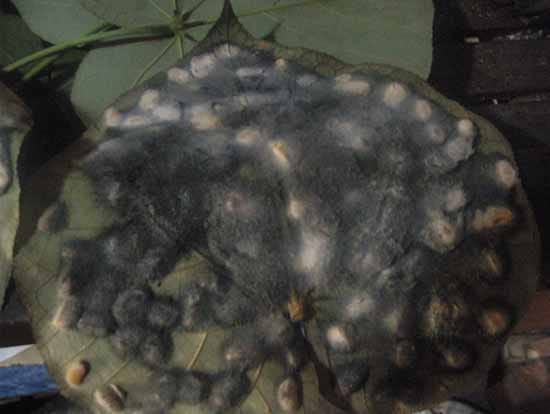
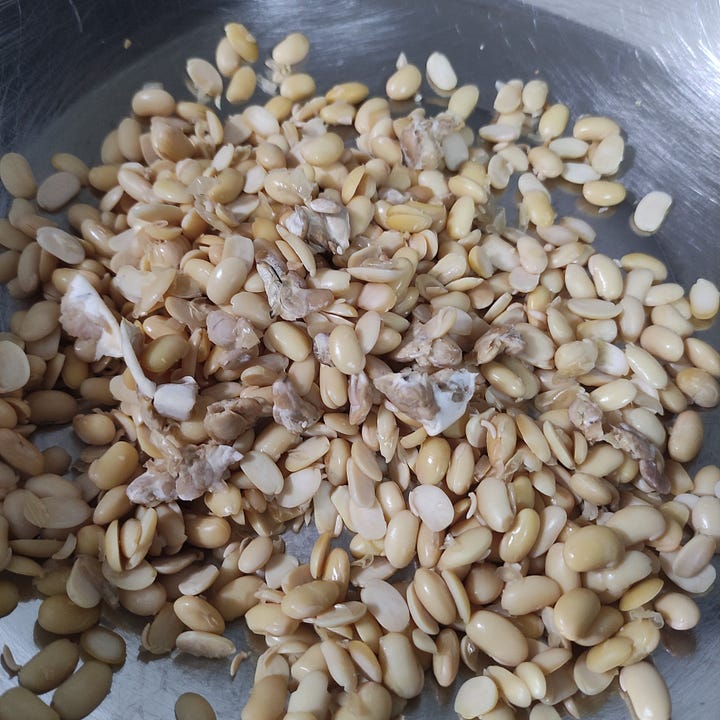
Once mixed with the starter, the soybeans are traditionally bundled up in leaves to ferment. The men would go into nearby forested areas to forage for daun simpoh air (Dillenia suffruticosa) - known affectionately to my family as "daun tempeh" (meaning tempeh leaves in Malay) - that served as the natural packaging due to its size and ubiquity in the kampung.
These days, however, it has become a challenge to legally obtain daun simpoh in Singapore. Alternative packaging material for the inoculated beans include perforated plastic zip bags, or store-bought banana leaves, secured with skewers or rubber bands. Regardless of the wrapper of choice, the packed beans need to be placed in an area with good ventilation - ensuring that they have good airflow above and underneath it to allow for the even formation of the mycelium.
As a tempeh-maker, it is extremely satisfying to the slow but steady transformation of the inoculated beans into a proper slab of tempeh. In Singapore’s climate, the tempeh should be fully formed by the 36-hour mark. Ultimately, the resulting tempeh should be warm to the touch and have an odour that resembles mushrooms.


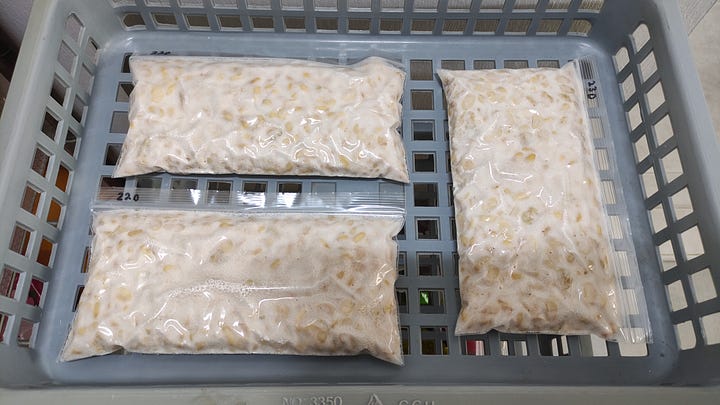
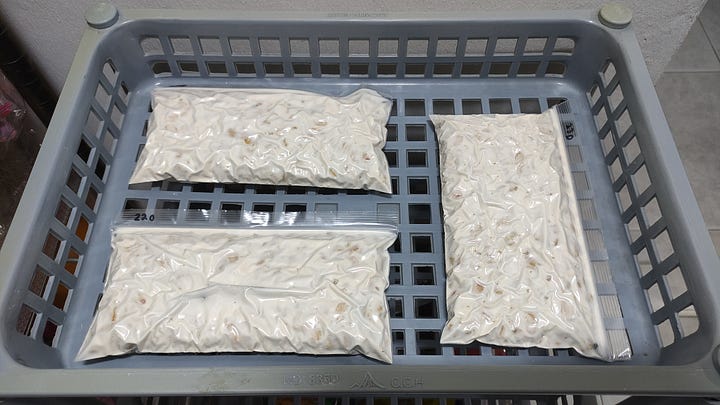
The tempeh legacy
When Kampung Tempeh was designated for redevelopment in the 1980s, families had to be relocated to HDB flats. My family’s tempeh-making venture still continued in the kitchens of a couple of my aunts, though their yield was limited due to space constraints. Sadly, as old age and health issues caught up to them, most tempeh-making activities ceased around the late 1990s to early 2000s. It also did not help that there were no clear successors who saw interest in taking over the business.
I make soybean tempeh at home when time permits, much to the enjoyment of my family members. Some were pleasantly surprised when I handed them a couple of slabs of homemade tempeh and my aunts were visibly emotional. Nobody said anything directly to me, but their body language and reaction seemed to suggest that they are holding onto a glimmer of hope and expectation for some sort of tempeh-making to still run in the family.
I feel privileged, honoured, and humbled to be able to share what I have learnt about tempeh, and to continue my family’s legacy of making tempeh - albeit at a much smaller scale. You’ll find my step-by-step guide to making tempeh at home in Part II of this tempeh newsletter. May all of this information be beneficial for you, and the start of a movement to make tempeh accessible and enjoyable for all.

